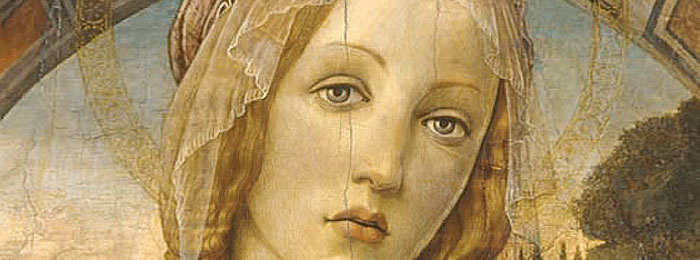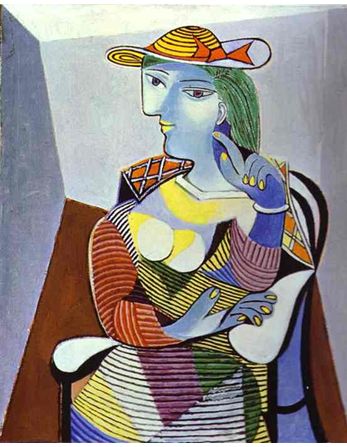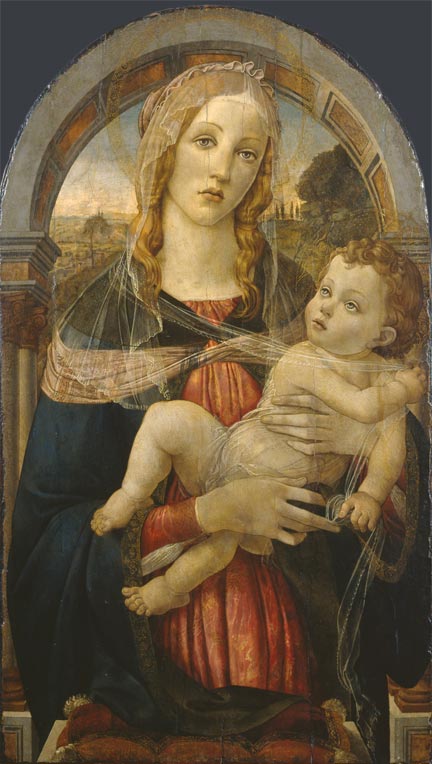On 5 Aug, 2015 With
Italian Renaissance portrait was unmask as a remarkably sophisticated 20th-century forgery. Sometimes we see what we want to see. When this Italian ‘Renaissance’ portrait was acquired by the National Gallery in 1923, it was hailed as a unique painting by an undiscovered master of the 15th century. Since the 1950s, connoisseurship, art historical research and scientific analysis have combined forces to unmask a remarkably sophisticated 20th-century forgery. This portrait was acquired by the National Gallery in 1923 as a painting of the late 15th century, possibly by an accomplished but unknown artist in the circle of Melozzo da Forli (1438?1494), an artist primarily active in Urbino and Rome. The armorial badge stamped into the gesso at upper right suggested the…
Read More
On 20 Dec, 2010 With
The Daily Tele swallows a fake Picasso Would you fork out your redundancy money to buy a Picasso off the internet? Happens all the time. The Daily Telegraph’s Elizabeth Fortescue reported last week that a young Sydney woman took her online Picasso to an “antiques roadshow” in Dee Why the other day. She asked the expert if she’d done the right thing. The news was stunning. Fine art valuer Sue-ann Smiles immediately identified it as a Picasso. “I knew straight away. Quite frankly, (the painting) should be in the National Gallery of Australia. This is a cultural heritage piece,” she said. The woman told Ms Smiles she had bought the painting, sight unseen, from a private owner in Europe and that she only…
Read More
On 27 Sep, 2010 With
Genuine fakes by Ben East Fakes and forgeries were once the embarrassment of the art world. No august gallery, no famous auction house is entirely free from the stain of a costly error of provenance. It was ever thus: one of the first acquisitions by the National Gallery in London was proudly unveiled in 1847 as a major painting by the 16th-century artist Hans Holbein. It was, they said, a purchase of “national significance”. But within weeks, doubt was cast on its authenticity, the attribution to Holbein was scrubbed and the gallery’s first director, Sir Charles Lock, resigned. Two centuries on, you’d forgive Lock a wry smile. Duped galleries and experts can now feel reassured that even if they do…
Read More
On 22 Sep, 2010 With
Eric Hebborn (1934- 11 January 1996) was a British painter and art forger and later an author. Early life Eric Hebborn was born in the London suburb of South Kensington to a Cockney family in 1934, although his mother was a gipsy. According to his autobiography, his mother beat him constantly as a child. At the age of eight, he states that he set fire to his school and was sent to Longmoor reformatory in Harold Wood, although his sister Rosemary disputes this. Teachers encouraged his painting talent and he became connected to the Maldon Art Club, where he first exhibited at the age of 15. Hebborn attended Chelmsford Art School and Walthamstow Art School before attending the Royal Academy. He flourished at the Academy, winning the Hacker Portrait prize…
Read More
On 9 Sep, 2010 With
For many years The Virgin and Child with an Angel was prized as Francesco Francia’s earliest known dated painting (faintly signed and dated 1490) and for representing, in the chalice held by the angel, the only known example of the type of object Francia may have produced during his presumed earlier career as a goldsmith. But in 1954 an apparently identical version surfaced in a London auction. A thorough investigation of both paintings was undertaken to determine which was Francia’s original. Side-by-side investigation In 1955 examination of the National Gallery painting found the wood panel,ground and paint layers to be reasonably consistent with 15th-century practice, although it was noted that the gessoground was a remarkably bright white. The imprimatura was a pinkish-brown. Although most unusual…
Read More
On 8 Sep, 2010 With
In the 19th century the painting of Venus with three putti was thought to be by Sandro Botticelli. It was acquired by the Gallery with Botticelli’s famous Venus and Mars, although more was paid for the former work despite the fact that it is today the less well-known of the two pictures. The attribution of the painting now laconically entitled An Allegory has been downgraded, but this does not call into question its authenticity, however awkward and eccentric its design. Two Botticellis? In 1874 the sale of the collection of Alexander Barker, the son of a fashionable bootmaker, was eagerly watched in London. Even the Prime Minister, Benjamin Disraeli, wrote to Lady Bradford that he meant “to rise early tomorrow…
Read More
On 7 Sep, 2010 With
When this painting first appeared around 1930, it was praised as a work byBotticelli. Not long afterwards, however, the investigations of art historians and scientists revealed it to be an outright fake, made with the intention to deceive. Acquisition The noted art collector Lord Lee of Fareham bought the Madonna of the Veil in 1930 from an Italian dealer for the sum of $25,000. He subsequently bequeathed it to The Courtauld Gallery, London in 1947. Despite a lack of information about its origins, the picture was universally hailed by connoisseurs and academics as a masterpiece by Botticelli when it first arrived in London in the early 1930s. The directors of the Medici Society published the painting as a ‘superb composition of the greatest of…
Read More





